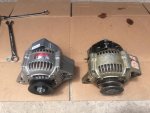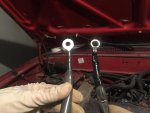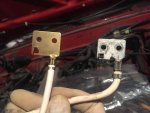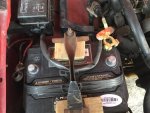Dopesick
Does a bear..........
Dopesick, must one of the (+) battery cables (the one from battery to fuse block) be a fusible cable or can it be replaced with a normal cable? I know the 80 AMP fuse in the fuse block is connected to a white fusible cable, but I'm not sure if it's the same cable mentioned here.
Battery I just replaced it recently with a 700 Amp capacity one.
Is a fuse-able link needed, No.
Should a fuse-able link be installed, Yes.
BMarino said:I'm pretty sure the alternator isn't the main issue, but rather a symptom or a consequence of _
You are 100% correct. With the photos I can totally see a two fold problem.
1: The ring terminals used.
2: The battery terminals.
First and foremost: I want to stress GET RID of those terrible crimp on ring terminals. Those ARE NOT rated for the capacity (amperage) those cables will see.
The problem there is.... HEAT. Your alternator see those as a load, while it is pushing power towards the battery for charging.
This causes your alternator to work harder than need be, as the connectors are actually just a "resistive load", which the battery also is technically.
Secondly: get rid of those battery terminals completely. Get yourself a set of these: https://www.amazon.com/gp/product/B00JK9FTZI/
If you must use crimp terminals, at the very least use ones like these: https://www.amazon.com/SELTERM-Marine-Terminal-Battery-Eyelets/dp/B073FBS229
When using those, use a proper crimp tool. DO NOT, use a vice like the guy in the video. All he did was flatten the connector to the cable. This does not get as much contact surface as possible of the connector to cable as should be done!.
Do however, use a small propane torch to heat the terminal and back flow it with solder, like this:
Last edited:




